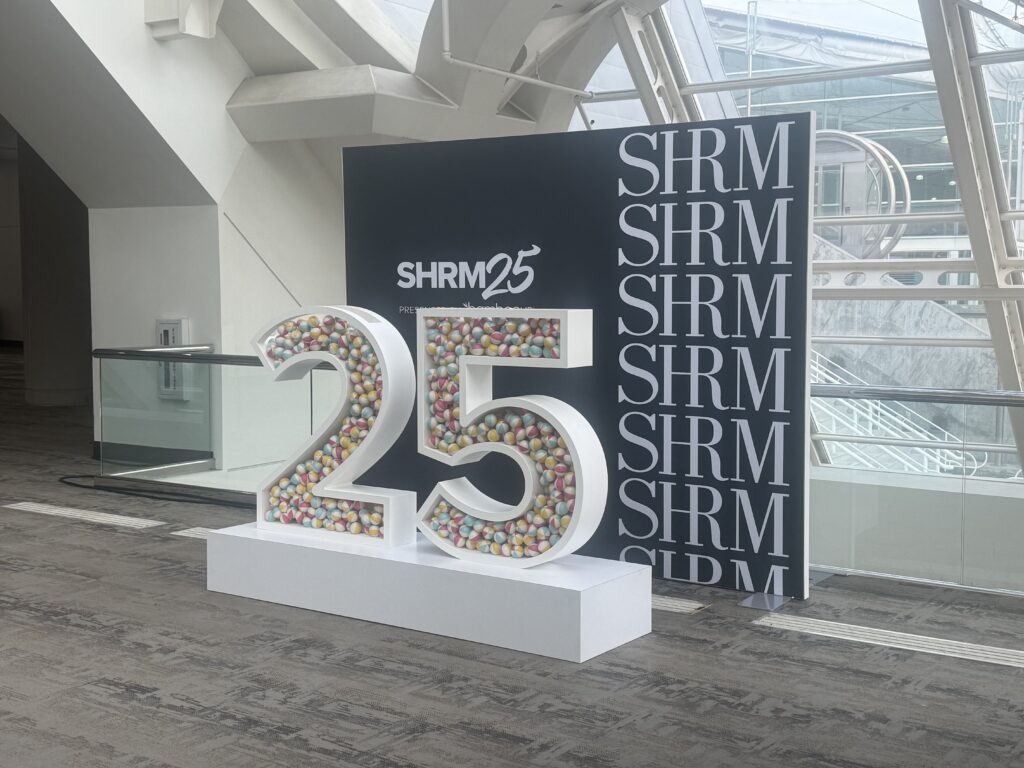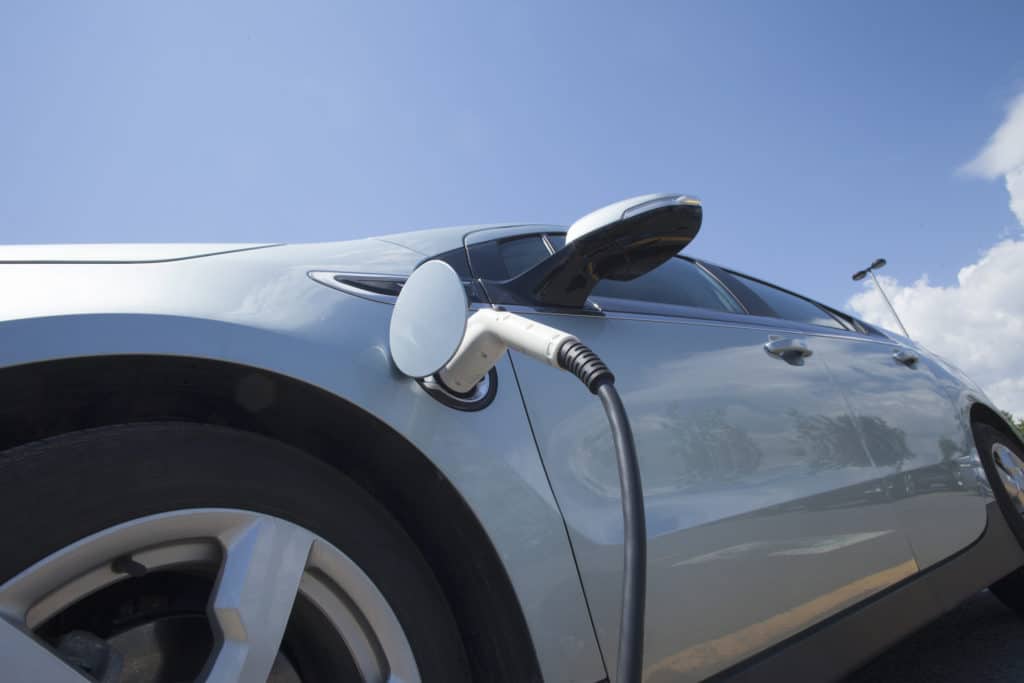The Motus team reflects on three days of eye-opening conversations with HR leaders about the evolving needs of employees who drive for work
San Diego’s perfect weather provided the backdrop for SHRM 2025, but inside the convention center, the conversations were heating up around one of HR’s most overlooked challenges: effectively managing and supporting employees who spend significant time working from their vehicles.
The Original Remote Workspace
“The State of Corporate Driving in America Quiz,” drew many HR professionals eager to test their knowledge about corporate driving trends. What we discovered was both surprising and telling—while 68% of former fleet drivers report increased job satisfaction after switching to vehicle reimbursement programs, many HR leaders were unaware of just how much time their field teams spend working from their cars.
The reality check: Driving employees spend 33% of their work week—13 hours weekly—working from their vehicles. As one attendee put it after taking our quiz, “I never thought of vehicles as America’s original remote workspace, but that’s exactly what they are!”

Beyond the Booth: Real Conversations, Real Challenges
Throughout the three-day event, we had the privilege of connecting with existing Motus users who shared their success stories, while introducing ourselves to HR professionals facing familiar pain points:
Administrative Burden Overload HR teams told us they’re drowning in manual expense reports, struggling with inaccurate mileage submissions, and spending countless hours on vehicle program administration that could be better spent on strategic initiatives.
The Fairness Factor A recurring theme was regional inequality. Our quiz revealed that Western region employees face fuel costs 37% higher than their Midwestern counterparts, yet many organizations still use uniform national reimbursement rates.
Technology Expectations vs. Reality While 64% of driving employees prefer GPS-based automatic tracking, many organizations are still relying on outdated, manual processes. The disconnect between employee expectations and current systems was a wake-up call for several attendees.
The Modern Solution: Strategic Vehicle Reimbursement
Our conversations consistently circled back to a fundamental shift in thinking—moving from viewing vehicle programs as administrative necessities to recognizing them as competitive advantages for talent acquisition and retention.
What We Shared: The Five Pillars of Program Success
- Strategic Planning & Stakeholder Alignment Building compelling business cases with clear ROI projections while securing executive buy-in through data-driven presentations.
- Change Management Excellence Developing comprehensive communication strategies and creating phased rollout plans to minimize disruption.
- Technology Integration Implementing mobile-first solutions that integrate seamlessly with existing HR systems while providing real-time reporting capabilities.
- Driver Experience Optimization Simplifying onboarding processes and delivering intuitive, user-friendly tools that employees actually want to use.
- Continuous Improvement & Optimization Monitoring key performance indicators and conducting regular program reviews to ensure sustained success.
The FAVR Advantage
One of our most impactful conversations centered around Fixed and Variable Rate (FAVR) programs. Unlike traditional fleet vehicles or simple cents-per-mile reimbursements, FAVR programs offer:
- Accurate, localized rates that account for regional cost differences
- Tax advantages that benefit both employers and employees
- Flexibility that allows employees to choose vehicles matching their work needs and lifestyle preferences
- Transparency that builds trust and satisfaction
“We’ve been struggling with our fleet program for years,” shared an HR director from the construction industry. “The idea that we could give employees choice while reducing our costs and administrative burden—that’s game-changing.”
Technology That Transforms
The automation conversation resonated strongly with attendees. When we shared that automated mileage tracking saves employees 52+ hours annually compared to manual methods, the response was immediate: “That’s more than a full work week of productivity returned to our teams!”
Our demonstrations of mobile-first solutions showed how technology can transform the employee experience from frustration to satisfaction, with solutions like Motus that deliver 97% driver satisfaction rates and 75% reduction in administrative overhead.
Looking Forward: The Competitive Advantage of Vehicle Programs
What struck us most about SHRM 2025 was the shift in perspective we witnessed. HR leaders arrived thinking about vehicle programs as operational necessities. They left understanding how modern reimbursement solutions can become strategic differentiators.
The statistics spoke for themselves:
- 68% of former fleet drivers report increased job satisfaction after switching to reimbursement programs
- Up to 40% cost savings compared to traditional vehicle programs
- 95% trip capture accuracy with modern technology solutions
The Human Element
Beyond the data and technology discussions, what made SHRM 2025 special were the human stories. We met HR professionals genuinely passionate about improving their employees’ work experience. We connected with existing customers who shared how our solutions have transformed their operations. Most importantly, we had the opportunity to demonstrate how proper vehicle program management directly impacts employee satisfaction, retention, and productivity.
Key Takeaways for HR Leaders
If you’re managing employees who drive for work, consider these insights from our SHRM 2025 conversations:
- Recognize vehicles as legitimate workspaces requiring proper support and optimization
- Address regional disparities in vehicle-related costs to ensure fairness
- Embrace technology that automates administrative tasks and improves accuracy
- Focus on employee choice to drive satisfaction and retention
- View your vehicle program as a competitive advantage rather than an administrative burden
Thank You, San Diego
As we packed up our booth and reflected on three days of meaningful conversations, one thing was clear: The future of vehicle programs lies in employee-centric, technology-enabled solutions that recognize the unique challenges and opportunities of managing mobile workforces.
To everyone who stopped by our booth, took our quiz, and shared their challenges and successes—thank you. These conversations drive our mission to transform vehicle programs from administrative burdens into competitive advantages.
Ready to transform your vehicle program? Contact Motus for a customized assessment and discover how modern reimbursement solutions can become your competitive edge in talent acquisition and retention.







